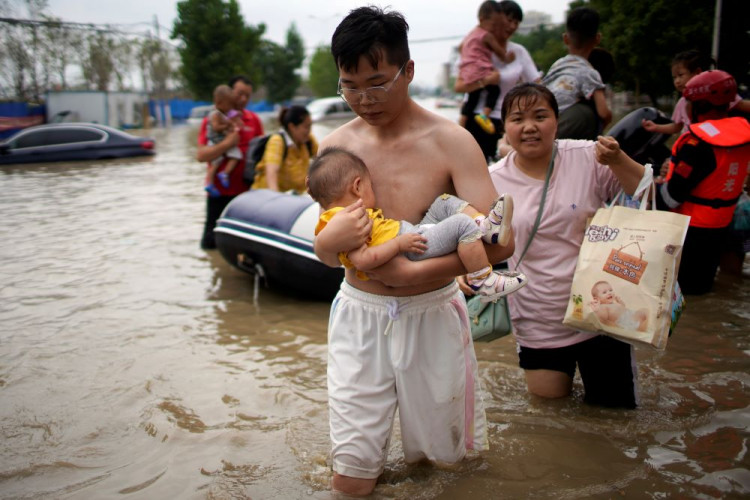BEIJING - The remnants of Typhoon Doksuri have wreaked havoc in Beijing and surrounding cities, causing one of the worst storms to hit northern China in over a decade. The torrential rains have disrupted services, food supplies, and claimed 20 lives, with 27 people still missing.
The storm, which has been battering Beijing for four consecutive days, has surpassed the rainfall levels of July 2012, a year marked by the strongest storm since the founding of modern China. The city government reported that the rainfall over the past few days has exceeded 190.3mm in a single day, affecting over 1.6 million people.
In response to the crisis, Beijing's Fangshan district has announced plans to deploy helicopters to deliver food, drinking water, and emergency supplies to villages in mountainous areas that have been cut off. In the nearby city of Tianjin, where the rain has become intermittent, 35,000 people have been evacuated from their homes. The local government has fortified river banks and stepped up the inspection and repairs of power, water, and communications lines.
Food delivery giant Meituan has also responded to the crisis, adding staff and extending delivery times as orders for vegetables, meat, and eggs rose 50% on its app and overall shopping increased by 20%.
President Xi Jinping has called for thorough search and rescue efforts for those missing or trapped, instructing authorities to minimize casualties and restore living conditions to normal as soon as possible. China's finance ministry has allocated 110 million yuan ($15 million) for rescue work in the Beijing-Tianjin-Hebei region.
However, the threat is far from over. Authorities have warned of the risks of further floods and other geological disasters. Localized thunderstorms and strong winds are forecast for Beijing, Tianjin, and Hebei, as rainfall stretches into a fourth day. Rivers have swollen to dangerous levels, prompting Beijing to use a flood storage reservoir for the first time since it was built 25 years ago.
As the city braces for more rainfall, another typhoon, Khanun, is on the horizon. It is expected to enter the East China Sea on Wednesday before moving to China's coastal provinces, Zhejiang, and Fujian, adding to the challenges faced by the disaster-stricken region.






